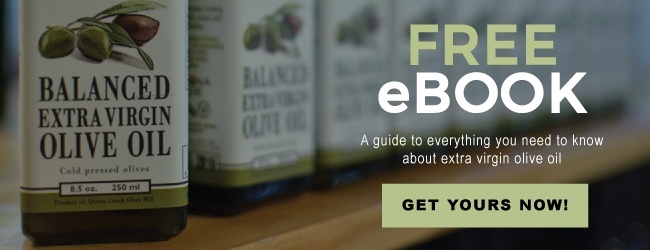5 Things to Look for when Shopping for Olive Oil
Shopping for olive oil has become somewhat challenging as of late. From the 60 Minutes 'Agromafia' special to fraud allegations of popular grocery store brands, it's hard to know who to believe anymore. To assist with this issue, we've compiled a list the top 5 tricks to help you determine whether or not the olive oil you're considering purchasing is the real deal. It's an easy test - you can do it standing right in the aisle of the grocery store.
Here are 5 things to look for when shopping for olive oil:
1. CLASSIFICATION OF OLIVE OIL
This is simple. What does the label describe your oil as? Extra Virgin Olive Oil, Virgin Olive Oil, Pure Olive Oil, and Light Olive Oil are some of the most popular types you'll see. These are all different classifications of the oil which means the end products all differ from each other. The healthiest, purest form of olive oil is Extra Virgin because it contains the most nutrients and highest amounts of polyphenols than any other classification.
MAIN TAKE AWAY: Make sure the phrase "extra virgin" is used to describe the olive oil.
2. DARK GLASS BOTTLE
When olive oil is stored in a dark glass bottle, it is protected from natural light that it's exposed to during transit, storage and overall shelf life. Light promotes oxidization so the less light your oil is exposed to, the fresher it will stay.
MAIN TAKE AWAY: Look for olive oil bottled in dark glass.
3. HARVEST & BOTTLE DATE
Always, always, always look for a harvest and/or bottle date on your oil. When it comes to extra virgin olive oil, fresh is best! If there's no date, there's no telling when the olives were picked, pressed, or more importantly, how long it's been in the bottle for. The harvest date on the bottle should always reflect the latest harvest year as olive oil tends to rancidify 12 months after it's bottled. We don't trust expiration dates without a harvest or bottle date.
MAIN TAKE AWAY: After you locate the harvest/bottle date, make sure it's from the most recent harvest year.
4. NUTRITION FACTS
Your body needs fat! Good fat, that is. Olive oil contains a higher amount of monounsaturated fat than any other oil. A well-balanced diet should include generous amounts of monounsaturated fats (like olives, avocados, nuts) and polyunsaturated fats (like seeds and fish) as they have been proven to lower blood pressure and bad cholesterol. So get your (nutrition) facts straight - what you're putting in your body is all good stuff, no need to count calories here! But we do recommend that you stay away from saturated and trans fats.
MAIN TAKE AWAY: Don't be afraid of the high levels of monounsaturated and polyunsaturated fats on the nutrition label.
5. KNOW YOUR FARMER
Like we said before, fresh is best when it comes to your olive oil. It typically takes 3 months for the EVOO to arrive to the U.S. from Italy, Spain or Greece (the world’s major importers of olive oil). Then, it’s not uncommon for the bottles to sit on a shelf for weeks or even months. If you are lucky enough to know a local olive oil producer, buy from them! If not, we suggest buying American-made, or that you find a brand online that you trust and purchase directly.
MAIN TAKE AWAY: Figure out it's place of origin, if you have the opportunity to buy local, do it!
Will you use these tricks when purchasing your next bottle of olive oil? Or are you lucky enough to buy from a local olive oil company? Let us know in the comments below!
Recipe: Red Velvet Olive Oil Cupcakes
Recipe: Blood Orange Olive Oil Fudge




